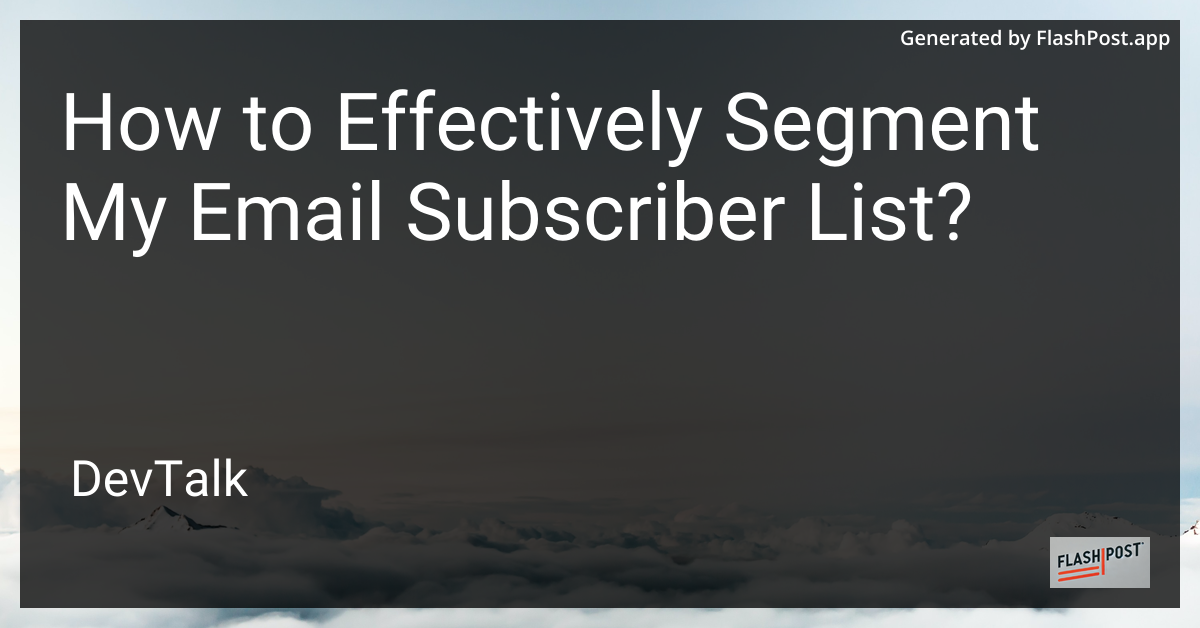How to Effectively Segment My Email Subscriber List?

How to Effectively Segment Your Email Subscriber List
Email marketing continues to be one of the most effective digital marketing strategies.
However, merely having a list of email subscribers isn't enough; it's crucial to segment your list to achieve better results. Here's a comprehensive guide on how to effectively segment your email subscriber list to maximize engagement and conversions.
Why is Email List Segmentation Important?
Segmentation allows you to tailor your messages to meet the specific needs and interests of different groups within your audience. This personalized approach can lead to higher open rates, increased click-through rates, and ultimately, improved sales.
Key Benefits of Email List Segmentation
- Improved Engagement: By sending relevant content, subscribers are more likely to engage with your emails.
- Higher Conversion Rates: Personalized emails lead to higher chances of converting subscribers into customers.
- Reduced Unsubscribes: When content is relevant, subscribers are less likely to unsubscribe.
- Better Deliverability: Consistent engagement signals to email providers that your emails are valuable, improving your deliverability rate.
Strategies to Effectively Segment Your Email List
-
Demographic Segmentation:
- Age, Gender, and Location: Customize your messaging based on demographic factors. For instance, geographical segmentation can help promote location-specific offers.
-
Behavioral Segmentation:
- Engagement Levels: Identify active and inactive subscribers. Re-engage inactive users with targeted campaigns.
- Purchase History: Segment based on past purchases to cross-sell or upsell related products.
-
Psychographic Segmentation:
- Interests and Preferences: Utilize surveys or past engagement data to understand subscriber interests and tailor content accordingly.
-
Lifecycle Stage:
- Consider where each subscriber is in the customer journey. For example, new subscribers may need a welcome series, while loyal customers can receive exclusive offers.
-
Event-Triggered Segmentation:
- Respond to subscriber actions, such as sign-ups, downloads, or abandoned carts, with specific email sequences.
Implementing Your Segmentation Strategy
Once you have a strategy, it's crucial to know how to implement it technically. Sending segmented emails requires robust email infrastructure and knowledge of various email sending protocols and platforms. Here are some guides to help you:
- Learn how to send SMTP emails in Perl.
- Explore email sending capabilities in Laravel.
- Understand how to send SMTP mail from localhost.
- Discover ways to send emails from a Yahoo SMTP server using PowerShell.
- Get insights into sending emails with PowerShell.
Conclusion
Effectively segmenting your email subscriber list is a vital step towards creating successful email marketing campaigns. By understanding your audience's needs and behaviors, you can deliver content that resonates and drives engagement. Implement these strategies and utilize the technical resources provided to enhance your email marketing efforts.
Segmentation may require some effort initially, but the rewards in engagement, conversions, and customer satisfaction are well worth it.
This Markdown article is structured to cater to SEO requirements with headings, bullet lists, and strategic use of keywords. It provides valuable content that aligns with the user's query, ensuring relevance and interest.